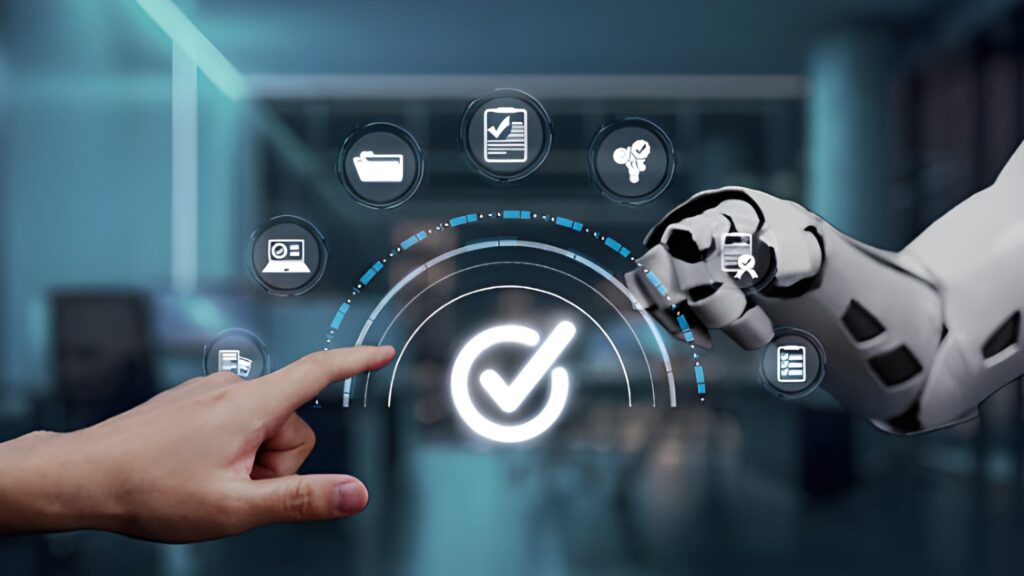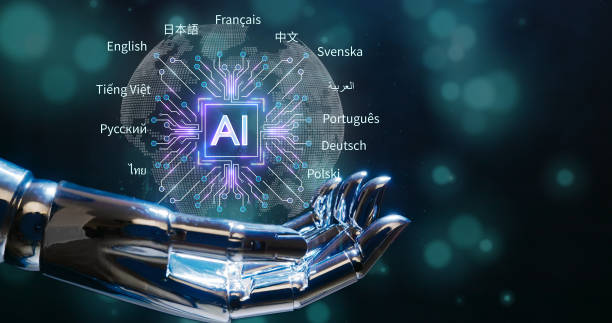Modern software development operates under immense pressure as organizations push multiple releases weekly, sometimes daily, while applications grow increasingly complex, spanning web platforms, mobile devices, APIs, and cloud services.
User expectations are continually rising, demanding flawless performance, ironclad security, and consistently delightful experiences. Traditional testing approaches cannot keep pace with these demands, resulting in incomplete coverage, persistent bugs, and delayed releases.
AI fundamentally transforms test automation by moving beyond rigid, scripted procedures to intelligent, adaptive quality practices that learn and evolve continuously. Where traditional automation follows predetermined paths without deviation, AI explores dynamically, identifies gaps human testers overlook, adapts to changes automatically, and predicts problems before they manifest. AI test automation represents a fundamental reimagining of how quality assurance operates in modern software development.
Contents
Why Coverage Matters and How Errors Persist in Traditional Automation?
Manual testing faces inherent scalability constraints that worsen as applications grow. A skilled tester executes perhaps 50-100 test cases daily, but complex applications require thousands of scenarios for thorough validation, making comprehensive manual testing mathematically impossible. Teams inevitably prioritize, focusing on high-value features while edge cases and less-traveled paths remain inadequately tested.
Conventional automated testing improves speed but introduces challenges. Scripted automation tests only what developers explicitly program, meaning coverage depends entirely on human foresight and available time. Teams automate happy paths first while complex integrations, unusual data combinations, and edge cases get deferred indefinitely. Flaky tests plague traditional automation, passing during development but failing unpredictably in CI/CD pipelines due to timing issues or environmental differences. Maintenance overhead grows exponentially, with teams spending 40-60% of automation effort simply maintaining existing tests rather than expanding coverage.
Missed scenarios lead directly to production incidents that damage user trust and cost significant money. A payment edge case fails during Black Friday, costing millions in lost revenue. Authentication breaks for users with special characters in their names. Mobile apps crash on older hardware still used by 30% of customers. Silent regressions degrade quality gradually, performance optimizations inadvertently slow rarely used functions, security patches expose internal APIs by accident, and UI refreshes break accessibility for screen reader users.
How AI Enhances Test Coverage
AI analyzes codebases, user behavior data, and historical defect patterns to automatically generate comprehensive test scenarios. Machine learning algorithms analyze application structure to understand functionality, identify user journeys, and recognize integration points requiring validation. When developers modify authentication logic, AI generates tests covering changed functionality plus related features potentially affected. Database updates trigger tests validating data integrity and dependent queries. Frontend changes spawn tests checking modified components plus all pages incorporating them.
User flow analysis leverages production analytics to understand how real users actually interact with applications. AI identifies common navigation paths and generates tests, ensuring these critical journeys remain functional. It discovers unusual but legitimate patterns, users who bookmark deep links, customers who navigate backward through checkout, and administrators who use keyboard shortcuts exclusively.
Critical path analysis examines workflows to determine which sequences users depend on most heavily and which failures would cause the most business damage. Payment processing, user registration, data import/export, and report generation are typically critical paths that require extensive validation. Risk area identification combines code complexity metrics, recent change frequency, historical defect density, and dependency relationships to score application parts, enabling proportional testing resource allocation.
AI automatically generates synthetic test data that maintains referential integrity while systematically exploring boundary conditions. Customer records include various name formats, single names, hyphenated names, names with apostrophes, and extremely long names, revealing buffer overflow vulnerabilities. Edge cases get explored automatically, negative numbers in quantity fields, dates far in past or future, special characters in text inputs, null values in unexpected places. Privacy-compliant synthetic data enables testing with realistic volumes without exposing actual customer information.
AI Strategies to Reduce Testing Errors
Self-healing automation revolutionizes maintenance by identifying elements through multiple attributes simultaneously, IDs, names, labels, positions, visual characteristics, and contextual relationships. When one identifier breaks due to application changes, the others continue working, and the system automatically updates references. A renamed button gets located through label text and surrounding elements, and a repositioned form field gets found through placeholder text and nearby label associations. This adaptability reduces maintenance effort by 60-80% while keeping test suites functional through continuous evolution.
Flaky test identification happens through pattern analysis across multiple test runs. AI recognizes tests that pass 90% of the time but fail unpredictably, distinguishing them from tests that fail consistently due to genuine bugs. Statistical analysis examines whether failures correlate with specific environments, times of day, or concurrent test execution, revealing root causes like inadequate wait times or resource contention. Intelligent quarantine prevents flaky tests from blocking deployments while teams investigate systematically.
AI automatically examines logs, identifying error patterns, performance anomalies, and security concerns. It correlates errors across multiple runs to distinguish persistent problems from transient issues. Hidden defect detection reveals subtle problems, memory leaks manifesting only after hours of operation, authentication tokens occasionally corrupting under load, race conditions happening rarely but consistently under specific timing. Root cause analysis accelerates dramatically as AI correlates information from multiple sources and presents probable causes ranked by likelihood.
Risk-based testing focuses resources on areas most likely to contain defects or cause a severe business impact. AI scores tests based on code changes affecting tested functionality, historical failure rates, business criticality, and potential user impact. Impact analysis maps code changes to affected tests intelligently, database layer modifications trigger data persistence tests, authentication changes activate security suites, and performance optimizations run load tests.
Key Features & Benefits of Leading AI Test Automation Tools
Modern AI platforms accept test descriptions in plain English and automatically convert them into executable automation. “Verify users can complete checkout with a discount code” becomes a complete scenario covering navigation, product selection, discount application, and payment processing. Business analysts, product managers, and manual testers contribute directly without programming knowledge. Visual test builders provide alternatives through drag-and-drop workflow designers and record-and-playback functionality, capturing user interactions.
Intelligent scheduling optimizes test execution timing by considering resource availability, historical durations, and dependencies. Long-running performance tests execute in parallel with fast functional tests, maximizing infrastructure utilization. Massive parallelization across cloud infrastructure compresses testing windows, tests taking 8 hours sequentially complete in 15 minutes when distributed across hundreds of parallel threads, enabling truly continuous testing where every commit receives comprehensive validation.
Stakeholders receive customized views matching their information needs automatically. Executives see release readiness scores and risk assessments, managers view team productivity and defect trends, and developers focus on component-specific results. Actionable insights highlight what matters: “Payment processing failure rate increased 15% this sprint.” This provides clear direction: “Mobile coverage decreased to 67%” This identifies specific gaps, and “Predicted release delay: 3 days” enables proactive planning.
Seamless CI/CD integration makes testing automatic and invisible. Code commits trigger relevant test execution, quality gates evaluate results and determine whether builds progress, failed checks prevent problematic code from reaching production while providing rapid feedback. Deployment confidence increases dramatically when comprehensive testing validates every change automatically.
Adopting AI Test Automation in Practice
Begin with a thorough gap analysis, identifying where current testing falls short. Which features lack coverage? Where do production defects originate? What activities consume disproportionate manual effort? Start pilots with critical user flows delivering the highest business value, e-commerce checkout, user registration, and payment processing. Scale progressively from successful pilots to comprehensive automation, expanding coverage systematically across features, platforms, and test types.
AI-savvy test design requires different skills than traditional automation. Teams learn to write effective natural language descriptions, validate AI-generated scenarios for accuracy, and interpret intelligent analytics meaningfully. Validation skills prove critical as AI recommendations require initial human oversight. Teams verify generated tests cover intended scenarios, recognize when suggestions miss edge cases, and identify inappropriate self-healing assumptions. Human oversight remains essential for strategic decisions and creative problem-solving while AI handles repetitive analysis and execution.
Leading Solutions
KaneAI by LambdaTest exemplifies modern AI-powered test automation through comprehensive generative AI capabilities. Natural language authoring makes automation accessible regardless of technical background. Intelligent test planning analyzes applications and suggests scenarios, ensuring thorough coverage.
Self-healing automation adapts to UI changes automatically, drastically reducing maintenance burden. Intelligent failure analysis examines logs, screenshots, and videos to identify root causes without manual investigation. Integration with LambdaTest’s cloud device grid enables testing across 3000+ browser and device combinations. Parallel execution compresses testing windows while comprehensive recording aids debugging.
Other leading platforms like Qase AI combine test management with intelligent automation, offering AI-driven test case suggestions, workflow automation, and real-time reporting for collaborative teams.
Future Directions
Future AI systems will generate test cases, adapting continuously to changing products and user behavior, observing production patterns and creating corresponding tests automatically. Risk-based, AI-enhanced deployments will make quality gates intelligent and autonomous, assessing risk and determining deployment readiness without human approval for routine releases. AI-powered automation will expand beyond functional testing into comprehensive accessibility, security, and performance validation, all integrated seamlessly into unified quality pipelines.
Conclusion
AI test automation fundamentally advances coverage and reliability, moving quality assurance from reactive defect detection to proactive risk management. Coverage expands from selective sampling to comprehensive validation, errors decrease from common occurrences to rare exceptions, and maintenance transforms from an overwhelming burden to a manageable task. Organizations leveraging modern AI platforms like KaneAI achieve quality improvements that seemed impossible just years ago, natural language authoring democratizes automation creation, self-healing eliminates maintenance bottlenecks, intelligent analytics guide optimal resource allocation, and cloud execution enables comprehensive coverage. Teams embracing AI mobile app testing position themselves for sustained competitive advantage through superior software quality and accelerated delivery.




